In an article published in 1996, Jorge Castañeda (who later would become Mexico’s minister of foreign relations under president Fox) proposed that in Tijuana lies Mexico’s future, (1) an idea that has been floating around for many years. Tijuana has become the paradigm of the border city; a region perceived neither as Mexico nor as the United States, but as some sort of amalgam that has been labeled--among other things--a laboratory of post modernity, a hybrid city, a transborder city, Mexamerica, or more recently, the third nation, la tercera nación. Few would deny that in Tijuana some very interesting social, economic and cultural processes are taking place. These are manifested in its highly publicized and stigmatized night life, the Nortec musical movement and being named by Newsweek (2) among “The World’s Most Creative Cities”. In a September 2002 article "The World´s New Culture Meccas", the magazine describes Tijuana as one of the best places to create art. Although it must be said that this label comes more from external perceptions of the city than from the local artists themselves. Only a small minority of the members of this art Mecca can make a living at being artists, as many of them have expressed: Tijuana is a very good place to create art, but an awful place to sell it.(3) Today I would like to go beyond these paradigmatic images
of Tijuana. While artistic images as well as some inescapable Tijuana icons
will appear in this presentation, I also want to talk about a lesser known
part of Tijuana, what is being called the new Tijuana, la nueva Tijuana.
In the second part of this presentation about border cities, we will look
at another much less studied border town, the small community of Los Algodones,
Baja California where I believe one can find very interesting clues as to
the future of the border.
There are some arenas where the region is perceived as one entity. Certainly, some of the same businesses are on both sides of the border. [Picture 1] But after all, there are American fast food franchisees, car dealerships, Costcos, Office depots and other many transnational corporations in all of Mexico. Tijuanenses, however, also reproduce their own versions of American type businesses as we can see in these so called Mini markets, labeled as such in English--mini market el Aguaje [Picture 2] and mini market Castro [Pictures 3], and in the Tijuana version of west coast restaurant and bakery chain Marie Callenders. Tijuana’s spoof of this restaurant is María Candelaria, the quintessential indigenous name in Mexican popular culture; a name that derives from a 1940’s iconic film by the nationalist director Emilio Indio Fernández.
In other arenas, the transborderity is just simply not so.
The post-border construct is based on a naïve discourse about a theoretical
fusion in spite of plentiful evidence showing just the contrary. It
cannot be overstated that these concepts were (and are) being constructed
simultaneously as more walls were (and are) being erected dividing the Tijuana
/ San Diego border. The notion that tijuanenses, that is Tijuana’s inhabitants,
are accustomed to going back and forth across the border is only true for
some people under some specific circumstances. To be able to freely
and easily go to San Diego, a tijuanense has to fall under one of these three
categories: 1) To be a US citizen. There are thousands of tijuanenses born
in the United States as well as thousands of naturalized American citizens
living in Tijuana. These are not Anglo-Americans living in Tijuana but culturally
Mexicans with the two citizenships. 2) To have a green card, to be an alien
resident of the US. Although it is technically illegal to have a green card
without residing in the US, thousands of tijuanenses cross every morning
to work (or to study) in the US with a green card. To the American border
officer’s question, the answer is “I came to visit my mother, to visit my
family, I came to party… Yes, I live in San Diego.” Everybody knows
of this situation but chooses to ignore it. Both sides benefit. The advantage
to the commuter worker is to be able to live cheaply in Tijuana with an American
salary. One must keep in mind that the average house in San Diego now costs
half a million dollars. The benefits for the American side are the availability
of cheap labor for which the city or county does not have to provide services.
3) The third way to easily cross to the United States is either by having
a Mexican passport (with an American visa) or the so called local passport.
Both are given by the U.S. government to tijuanenses who are able to document
long time residency, a secure job and a long established savings account.
Those crossing using either a Mexican federal passport or border crossing
card are not supposed to seek employment. This is pretty much the Tijuana
that most people know, the one than revolves directly around the border,
the one born as a result of the prohibition law, the Volstead law of the
1920’s, the Tijuana of the Revolution Avenue with its famous or infamous
night life and its painted burros. Being the poorest area of Tijuana, this “Zona Oriente” is characterized by the improvisation of services and business that fill a need in an area with many necessities. If no established business will open soon enough, an improvised one will have to do. No corner store? No problem! No block buster video will open up in the neighborhood? There is Video Vision. [Picture 5] No dominos pizza? Homero's pizza will have to suffice. [Picture 6] More than its relationship with the visitors from the north, Tijuana’s future will be dictated by the city’s ability, or lack thereof, to integrate these new tijuanenses.
Now, let us turn to a much smaller town, three hours from Tijuana. Los Algodones is located on the west side of the Colorado River near Yuma, Arizona, and approximately fifty minutes to the east of Mexicali, precisely at the four corners of the states of California, Baja California, Arizona and Sonora. Most of the activity in Los Algodones centers on the winter visitors who cross the border six months out of the year. During those months, an average of 15,000 persons, mainly from the US but also from Canada, go daily to Los Algodones sometimes more than doubling its population. Known as "Snowbirds" because they are seeking out warmer weather during the winter months, these visitors spend an estimated one million dollars daily in Los Algodones. According to local officials, another two million pesos (approximately US $180,000) is collected in taxes.(12) A Mexican customs officer with whom I spoke told me that an average of $100 dollars is spent per day per tourist. This small multi border town usually doesn’t make either
United States or Mexican news. Los Algodones enjoys a relatively low crime
rate. In a post 9/11 era when security has become the operative word, Los
Algodones seems to represent the goal of a safe border for both countries.
On January 26, 2005, the U.S. State Department issued a travel alert cautioning
its citizens from traveling to the Mexican border cities. That very same
day, Anthony Garza, the American ambassador in Mexico, sent a letter to President
Vicente Fox’s administration criticizing Mexican law enforcement or, better
said, the lack of it. He talked about the incapability of the local
Mexican border law enforcement to confront drug delinquents, kidnappings
and violence in general. All this--Garza warned--will have a negative
effect on binational relations, tourism, and commerce on our borders, “which
are vital for the regions prosperity.” (13) Both incidents
tensed relations between the two countries. The immediate response from the
Fox administration was to say that if the violence had increased in some
border cities, it was because drug traffickers were being persecuted and
felt cornered, that Mexico was giving them the “mother of all wars” (la madre
de todas las guerras). (14) Los Algodones has several impressive statistics. Los Algodones has been able to adapt itself to the changes. Several years ago there were only a few pharmacies. The businesses then were the traditional Mexican curio shops. One can still find a lot of vendors selling so-called Mexican curios. Different form other border cities, night life is not such an important ingredient in the Los Algodones offerings. Although there are many restaurants where visitors can eat after shopping, contrary to what one would expect from the stereotypical Mexican border town, there are few cantinas in the business area. Sexual advertisement is not altogether absent, many pharmacies advertise Viagra, some even providing visual stimuli. [Pictures 9 & 10]
It is indeed ironic that it is health related issues that both attract
and repel visitors. It is not only in search of pharmaceuticals that
visitors go to Los Algodones. The town is also famous for its large
number of doctors and dentists. Los Algodones is the proof that one
need only look to one side of the border to see what the other is lacking. (19)
With prices for health care related services continuously escalating
in the U.S., this small border town is the answer for people with a
fixed income. As with the pharmacies, the village also holds records
for doctors and dentists per square foot. According to the DentistsOfAlgodones.com
webpage, in ten years, the number of dentists has grown from single
digits to “well over two hundred.” (20) Since
there is so much competition, health care providers have to depend
on “word of mouth” to progress. Even charging one third in relation
to their American counterparts, it is evidently a good business, especially
if one takes into consideration that several doctors as well as dentists
also own pharmacies to where, of course, they direct their patients
to fill prescriptions. Of course, not everybody is a business owner; there are
many employed as optical, medical and dental assistants, secretaries, vendors,
barbers and hair stylists--giving three dollar cuts--and those who provide
other ambulant services such as hair braiding and shoe shines. Even
the guy who asks for donations to purportedly help rehabilitate drug addicts
gets money. [Picture 11]
Notes
2. September 2, 2002, Newsweek, Atlantic Edition . 3. Personal conversations with Tijuana artists over the last fifteen years. 4. Cruz,Teddy. “Border Postcard: Chronicles from the Edge” http://www.aia.org/cod_lajolla_042404_teddycruz 5. Photograph by Omar Pimienta. 6. Photograph by Omar Pimienta. 7. Frontera (Tijuana newspaper), October 18, 2001. 8. Photograph by Omar Pimienta. 9. For more on Malverde see True Tales from Another Mexico by Sam Quiñones and Narcocorrido: A Journey into the Music of Drugs, Guns, and Guerrillas by Elijah Wald. 10. Photograph by Omar Pimienta. 11. Photograph by Omar Pimienta. 12. Source: La Crónica (Mexicali newspaper ), January 12, 2004. 13. “Alerta EU por narcoviolencia en la frontera mexicana.” El Heraldo de Chiapas on line. http://www.heraldochiapas.com.mx/notas_n.asp?urlnota=270105nac1a.doc 14. “Responde Derbez a Tony Garza ” http://www.esmas.com/noticierostelevisa/mexico/421619.html, Also, “ EE.UU. y México suavizan diferencias”. http://news.bbc.co.uk/hi/spanish/latin_america/newsid_4220000/4220907.stm 15.“Superado el problema con EU: Fox” C:\Documents and Settings\carlos\Desktop\Superado el problema con EU Fox México esmas.htm Also, “La relación con EU se mantiene normal: Fox” C:\Documents and Settings\carlos\Desktop\Diario de Mexico - La relación con EU se mantiene normal Fox (Vista imprimible).htm 16. Photograph by Juan Carlos Ramírez-Pimienta. 17. Photograph by Juan Carlos Ramírez-Pimienta. 18. Photograph by Juan Carlos Ramírez-Pimienta. 19. Thanks to Pilar Hernández for pointing out this idea to me so eloquently. |
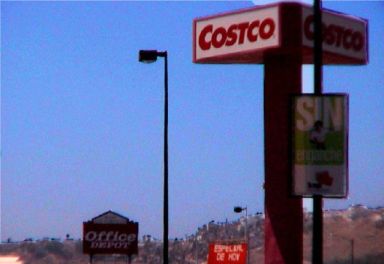 There
are two diametrically opposed images associated with Tijuana: On the
one hand the idea of a deterrent wall, the definite end of something
and the beginning of a different reality, the so called third vis
a vis the first world, poverty versus wealth, despair versus hope,
etc. On the other hand, there is the trendy idea that the region is
a porous one, Tijuana as a fusion city, a transborder city, a city
that extends and or melds with San Diego, as Teddy Cruz puts it:
“Rarely do we find two such radically different cultures and economies juxtaposed
so intensely as San Diego and Tijuana. They are intimately connected, but at
the same time sharply divided by a ten-foot steel wall that ruptures the continuity
of the shared landscape.”(
There
are two diametrically opposed images associated with Tijuana: On the
one hand the idea of a deterrent wall, the definite end of something
and the beginning of a different reality, the so called third vis
a vis the first world, poverty versus wealth, despair versus hope,
etc. On the other hand, there is the trendy idea that the region is
a porous one, Tijuana as a fusion city, a transborder city, a city
that extends and or melds with San Diego, as Teddy Cruz puts it:
“Rarely do we find two such radically different cultures and economies juxtaposed
so intensely as San Diego and Tijuana. They are intimately connected, but at
the same time sharply divided by a ten-foot steel wall that ruptures the continuity
of the shared landscape.”(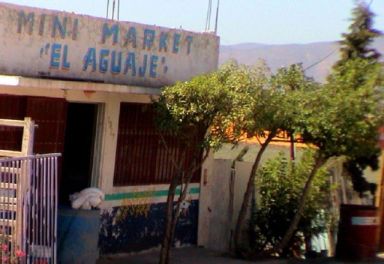
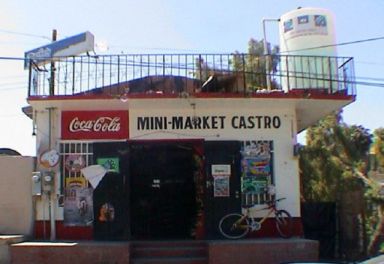
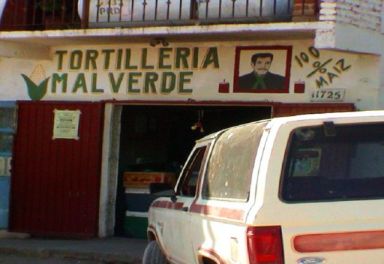 Here
is some data about this other non cosmopolitan, non chic Tijuana. In
this area live approximately one fourth of Tijuana’s estimated 1.2
million inhabitants. It only has one police precinct despite
being where most of the crimes take place. It is also where, during
winter, most of the respiratory-disease related deaths occur.(
Here
is some data about this other non cosmopolitan, non chic Tijuana. In
this area live approximately one fourth of Tijuana’s estimated 1.2
million inhabitants. It only has one police precinct despite
being where most of the crimes take place. It is also where, during
winter, most of the respiratory-disease related deaths occur.(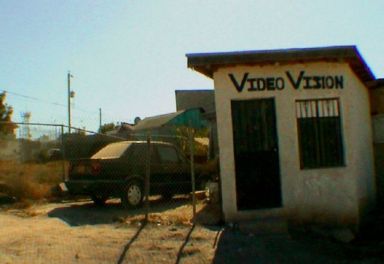
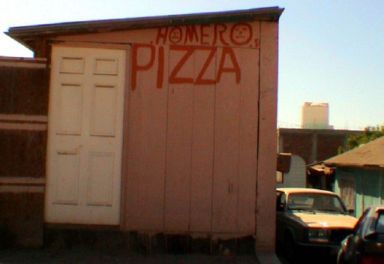
 of
January, in the form of President Fox’s visit to Los Algodones. There
he presented the small community as the paradigm of a Mexican border
town, one that is a safe provider of services for its American (and
Canadian) winter visitors. To the hundreds of winter visitors or snow
birds he explained the he had decided to pop in, “came to supervise,” he
said, “to listen directly from you, how you are being treated
and how you enjoy the tranquility that we have in these Mexican border
cities.”
He also talked to the media, both Mexican and American. To an American reporter
that asked if American people should be afraid to cross the border president
Fox answered “not at all”, then he emphasized that his administration will
continue the fight against drug trafficking, a war he claimed to be already
wining. (
of
January, in the form of President Fox’s visit to Los Algodones. There
he presented the small community as the paradigm of a Mexican border
town, one that is a safe provider of services for its American (and
Canadian) winter visitors. To the hundreds of winter visitors or snow
birds he explained the he had decided to pop in, “came to supervise,” he
said, “to listen directly from you, how you are being treated
and how you enjoy the tranquility that we have in these Mexican border
cities.”
He also talked to the media, both Mexican and American. To an American reporter
that asked if American people should be afraid to cross the border president
Fox answered “not at all”, then he emphasized that his administration will
continue the fight against drug trafficking, a war he claimed to be already
wining. (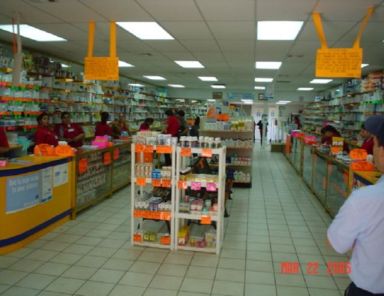 It
is probably the place with the most pharmacies per square mile in the world.
In an area of two blocks there are over twenty pharmacies, in many cases
owned by the same people, located one next to the other and competing against
themselves. There are at least three Mary’s pharmacies, also in close proximity.
One has to keep in mind that the majority of Algodones’ commercial area is
located on about four square blocks with several plazas to the interior of
these blocks. There are six Guadalajara pharmacies in the radius of one block,
sometimes literally one next to the other. And some of theses pharmacies
are by no means small. [
It
is probably the place with the most pharmacies per square mile in the world.
In an area of two blocks there are over twenty pharmacies, in many cases
owned by the same people, located one next to the other and competing against
themselves. There are at least three Mary’s pharmacies, also in close proximity.
One has to keep in mind that the majority of Algodones’ commercial area is
located on about four square blocks with several plazas to the interior of
these blocks. There are six Guadalajara pharmacies in the radius of one block,
sometimes literally one next to the other. And some of theses pharmacies
are by no means small. [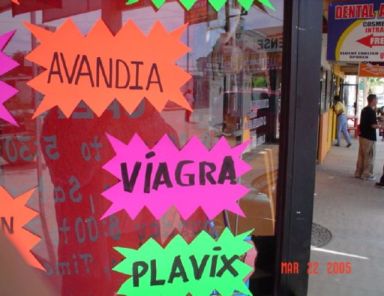
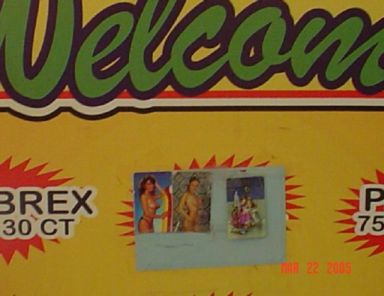
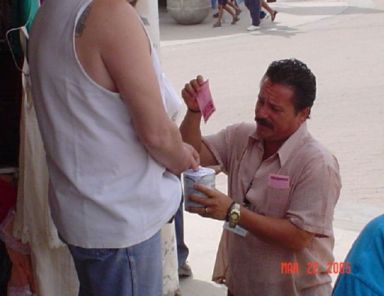 Some
professionals and business owners in Los Algodones are in fact becoming
corporate groups with interests in liquor stores, pharmacies, opticals
and even barber shops.
Some
professionals and business owners in Los Algodones are in fact becoming
corporate groups with interests in liquor stores, pharmacies, opticals
and even barber shops.